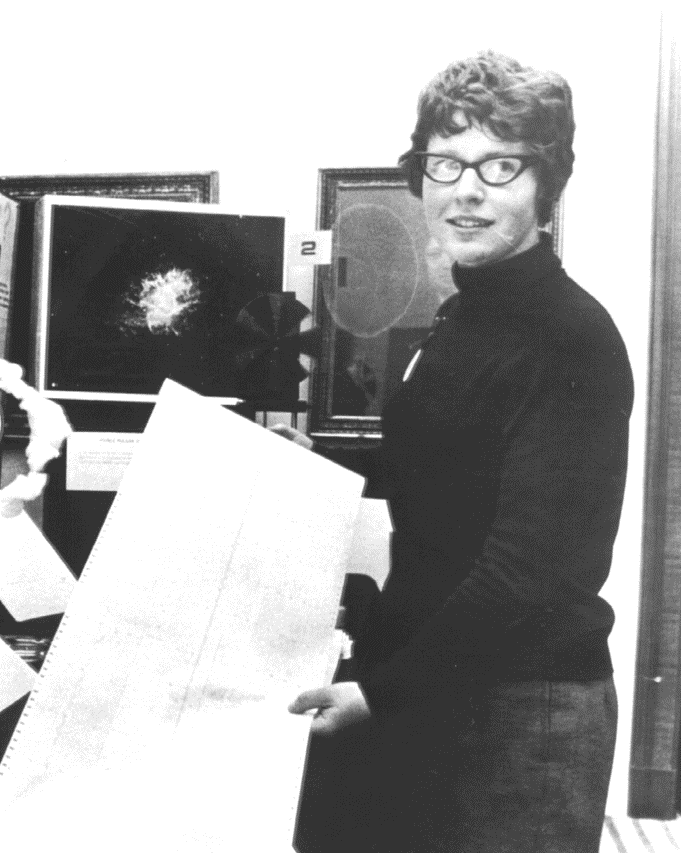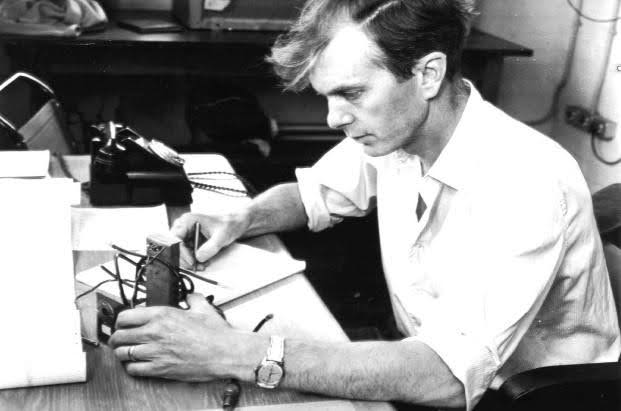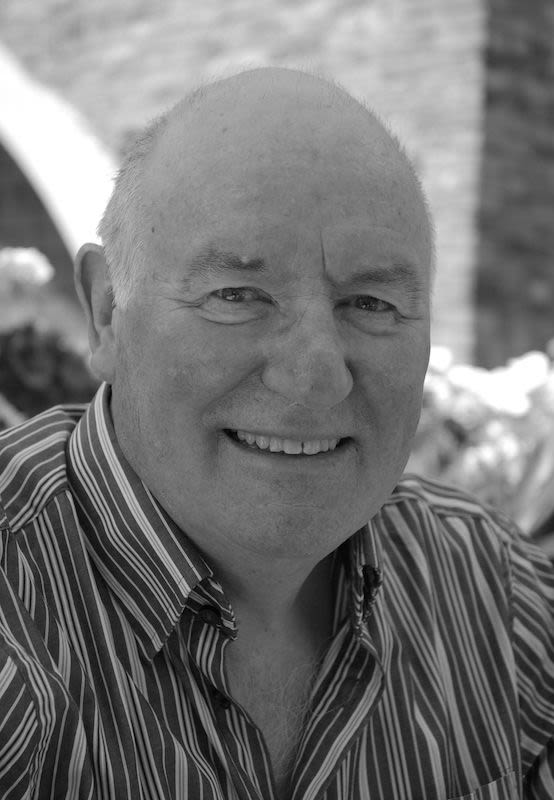Tuning in to the cosmos
From its origins in wartime radar research, to the latest international radio telescopes, Malcolm Longair charts the history of radio astronomy at the Cavendish.
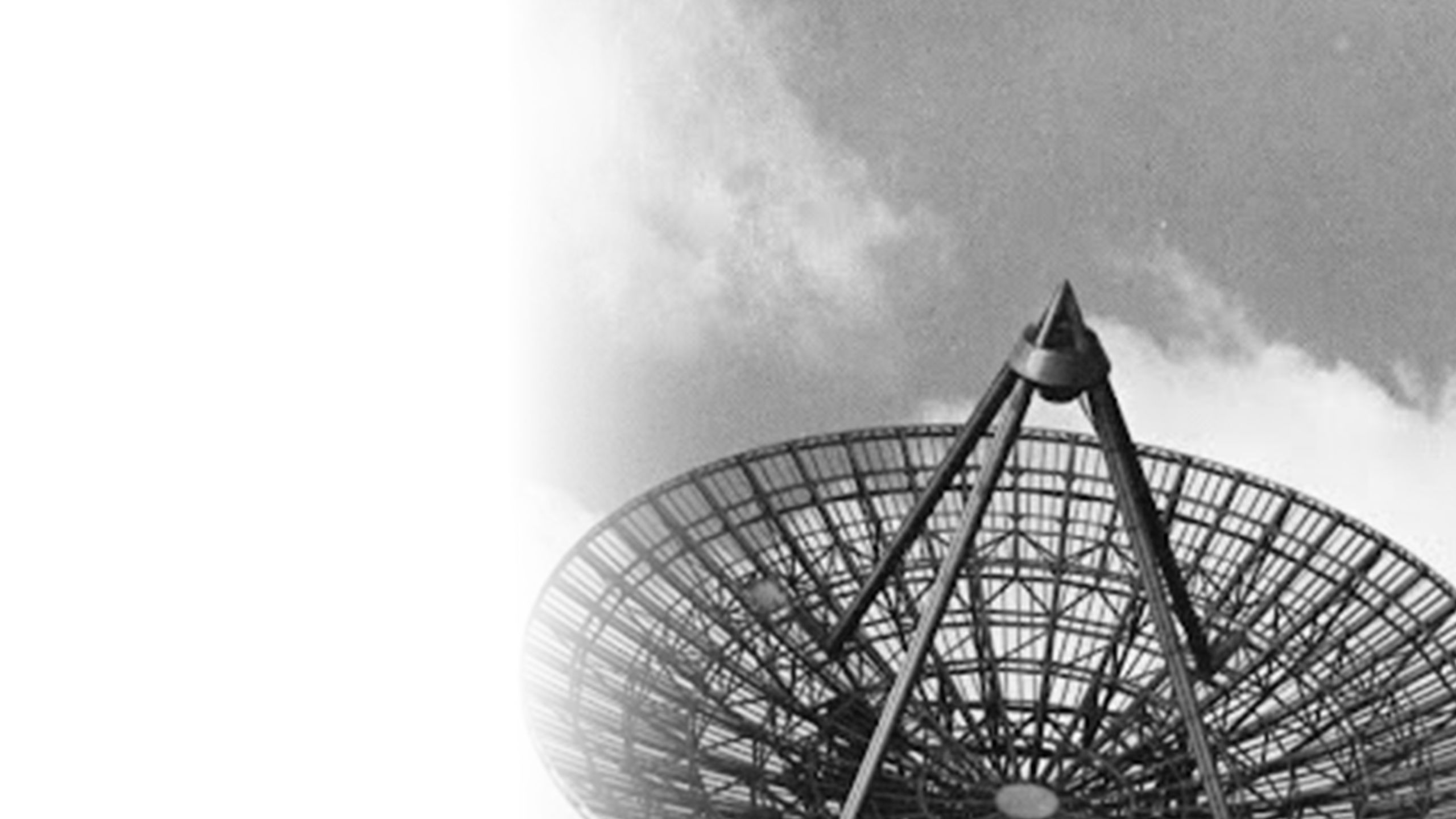

1934
The first radio waves from our galaxy were discovered by Karl Jansky in 1934 while studying extraneous sources of radio noise at the Bell Telephone Laboratories. These were followed up by Grote Reber who used his home-made radio telescope to produce a radio map of the galaxy in the 1940s, but this aroused little interest in the astronomical community.
Image: The Cambridge One-Mile telescope, the world’s first fully steerable Earth- rotation aperture synthesis array.
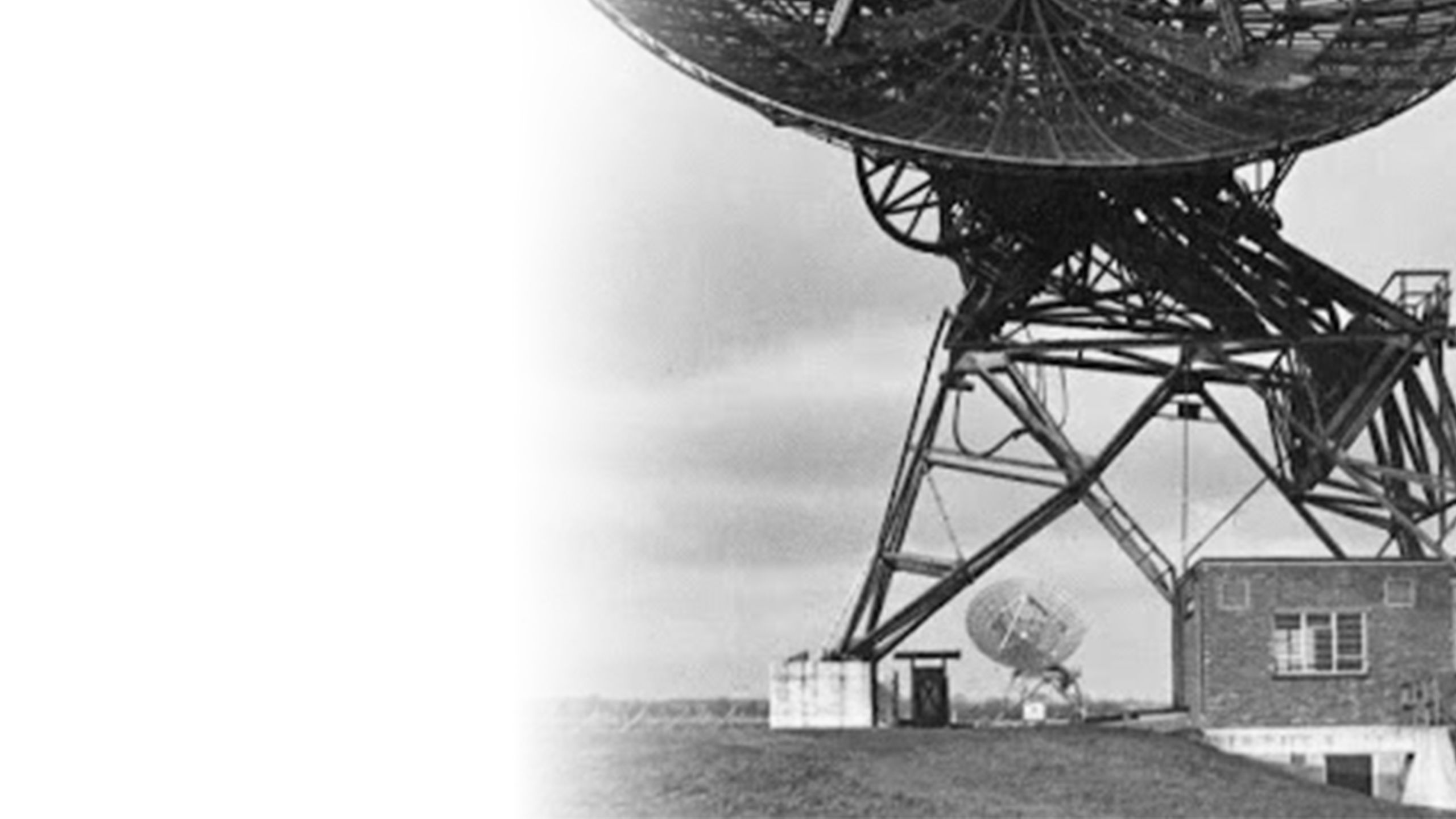
The huge efforts made during the Second World War to develop radar had a major impact upon radio technology. Future Cavendish radio astronomers, Martin Ryle, Tony Hewish and Graham Smith were all involved in this work. Because of the urgency of the need for innovation and imaginative solutions, the war years left an indelible mark on Martin’s technical and leadership abilities. Bernard Lovell remarked,
“… Ryle’s extraordinary inventiveness and scientific understanding soon became evident. Under the stress of urgent operational requirements, he became intolerant of those who were not blessed with his immediate insight.”
By the end of the war, radio emission from the Sun had been discovered as well as the very bright radio source Cygnus A. Ryle was encouraged by Jack Radcliffe to accept a fellowship to start up a radio astronomy group at the Cavendish immediately after the war. There was scarcely any money for equipment, but Martin and his colleagues were able to buy considerable amounts of surplus war electronics very cheaply. They also acquired large amounts of high-quality German radar equipment that had been requisitioned, including two 7.5-metre Würzburg antennae, several 3-metre dishes and vast lengths of high quality coaxial cable.
1946
In 1946, Martin and Eric Vonberg made interferometer measurements of radio emissions from the Sun and established that the bursts were associated with sunspots. Their remarkable short paper in Nature included three of the basic principles of radio interferometry. The greater challenge was to establish the nature of the discrete radio sources. By the early 1950s, it was apparent that a number of them were associated with rather strange massive galaxies.
Martin and Graham Smith measured accurate positions for the sources Cas A and Cygnus A with the pair of 7.5-metre Würzburg antennae used as an interferometer. This resulted in the identification of Cas A with a supernova remnant in our own galaxy and Cygnus A with a distant galaxy. Jennison and Das Gupta at Jodrell Bank showed that it had a strange double radio structure extending far beyond the optical image of the galaxy, which proved to be from synchrotron emission of ultra-relativistic electrons. These discoveries marked the dawn of high energy astrophysics and showed the enormous potential for new approaches to understand the universe.
Image: Graham Smith with the interferometer which used the two Würzburg antennae in about 1950.
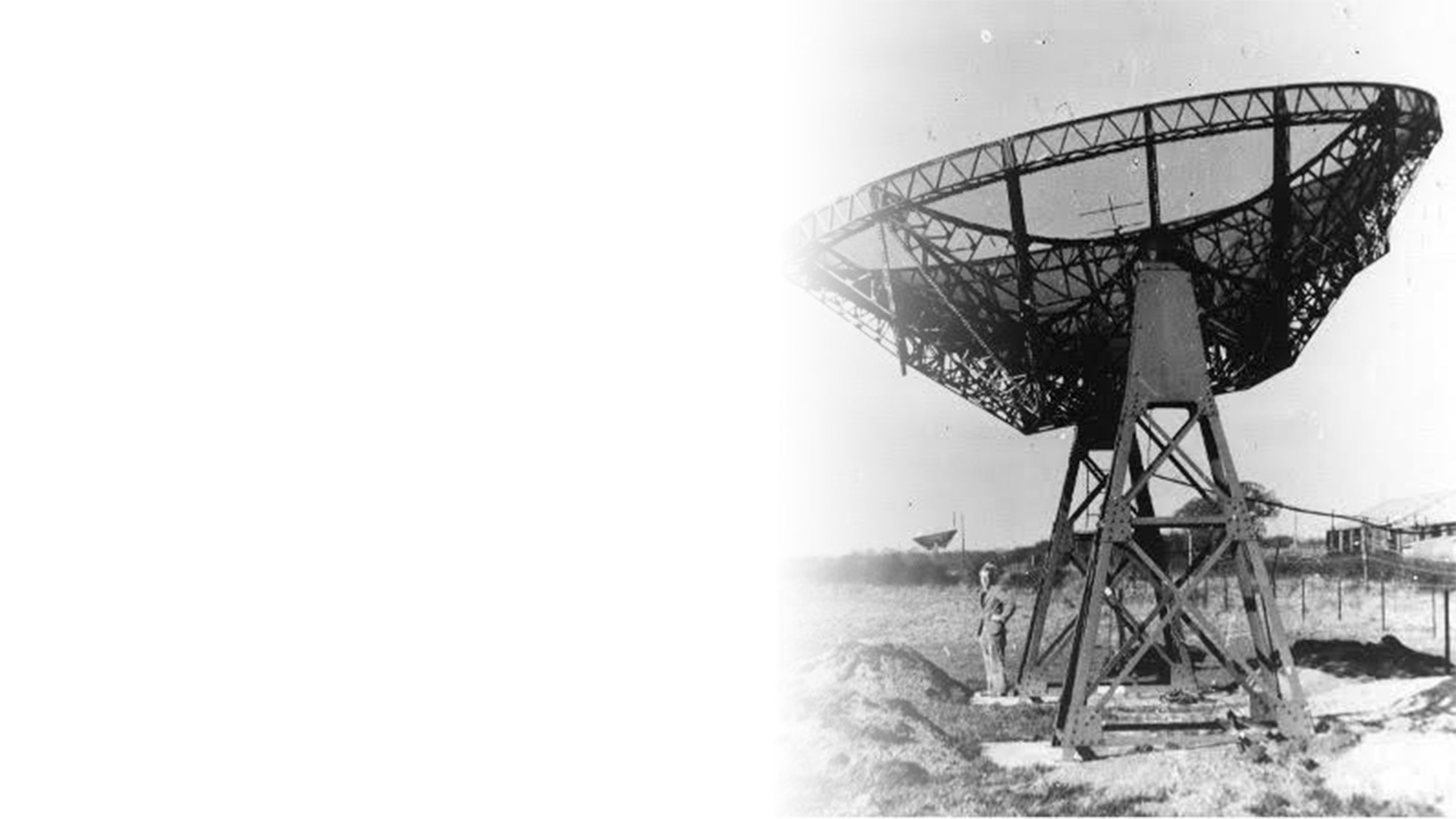
1946
In 1946, Martin and Eric Vonberg made interferometer measurements of radio emissions from the Sun and established that the bursts were associated with sunspots. Their remarkable short paper in Nature included three of the basic principles of radio interferometry. The greater challenge was to establish the nature of the discrete radio sources. By the early 1950s, it was apparent that a number of them were associated with rather strange massive galaxies.
Martin and Graham Smith measured accurate positions for the sources Cas A and Cygnus A with the pair of 7.5-metre Würzburg antennae used as an interferometer. This resulted in the identification of Cas A with a supernova remnant in our own galaxy and Cygnus A with a distant galaxy. Jennison and Das Gupta at Jodrell Bank showed that it had a strange double radio structure extending far beyond the optical image of the galaxy, which proved to be from synchrotron emission of ultra-relativistic electrons. These discoveries marked the dawn of high energy astrophysics and showed the enormous potential for new approaches to understand the universe.
Image: Graham Smith with the interferometer which used the two Würzburg antennae in about 1950.

1950
As early as 1950, the burgeoning radio astronomy group completed their first catalogue, known as ‘1C’, of about a hundred radio source in the northern sky. This was followed by the 2C survey with a four-element interferometer located on the University’s rifle range site to the west of the rugby ground, and conveniently right next to Martin and Graham’s house on Herschel Road. The catalogue contained about 2000 sources and, most surprisingly, a very large excess of faint sources, implying that there were many more sources in the early universe. In Ryle’s 1955 Halley Lecture in Oxford, he concluded:
“This is a most remarkable and important result, but if we accept the conclusion that most of the radio stars are external to the galaxy, and this conclusion seems hard to avoid, then there seems no way in which the observations can be explained in terms of a steady state theory.”
The result was a surprise to the astronomical community. The physical nature of the sources was not understood and only 20 of them could be associated with relatively nearby galaxies. A somewhat bitter controversy with the proponents of steady-state cosmology ensued, particularly with Fred Hoyle, the Cambridge Plumian Professor of Astronomy. In Australia, the Sydney group led by Bernard Mills carried out similar surveys of the southern sky around the same time but found that their counts did not show such a large excess. In 1957, Mills and Bruce Slee stated:
“We therefore conclude that discrepancies, in the main, reflect errors in the Cambridge catalogue, and accordingly deductions of cosmological interest derived from its analysis are without foundation … there is no clear evidence for any effect of cosmological importance in the source counts.”
1950s
Immediately after the war, the UK was broke, but by the 1950s funding improved through the establishment of the research councils. What Harold Wilson famously described as “the white heat” of a technological revolution, saw major increases in research funding of about 5% per year in real terms between 1956 and 1970.
In 1956, the radio observatory moved to a disused wartime Air Ministry bomb store at Lord’s Bridge outside Cambridge. Supported by a grant of £100,000 from the electronics company Mullard Ltd, the new ‘Mullard Radio Astronomy Observatory’ (MRAO) opened in 1957. A large aperture synthesis interferometer, the 4C radio telescope, was constructed to carry out deeper radio surveys of the sky. An excess of faint radio sources was still found but not to the extent of the 2C survey.
Image: Moving element of the 4C interferometer.
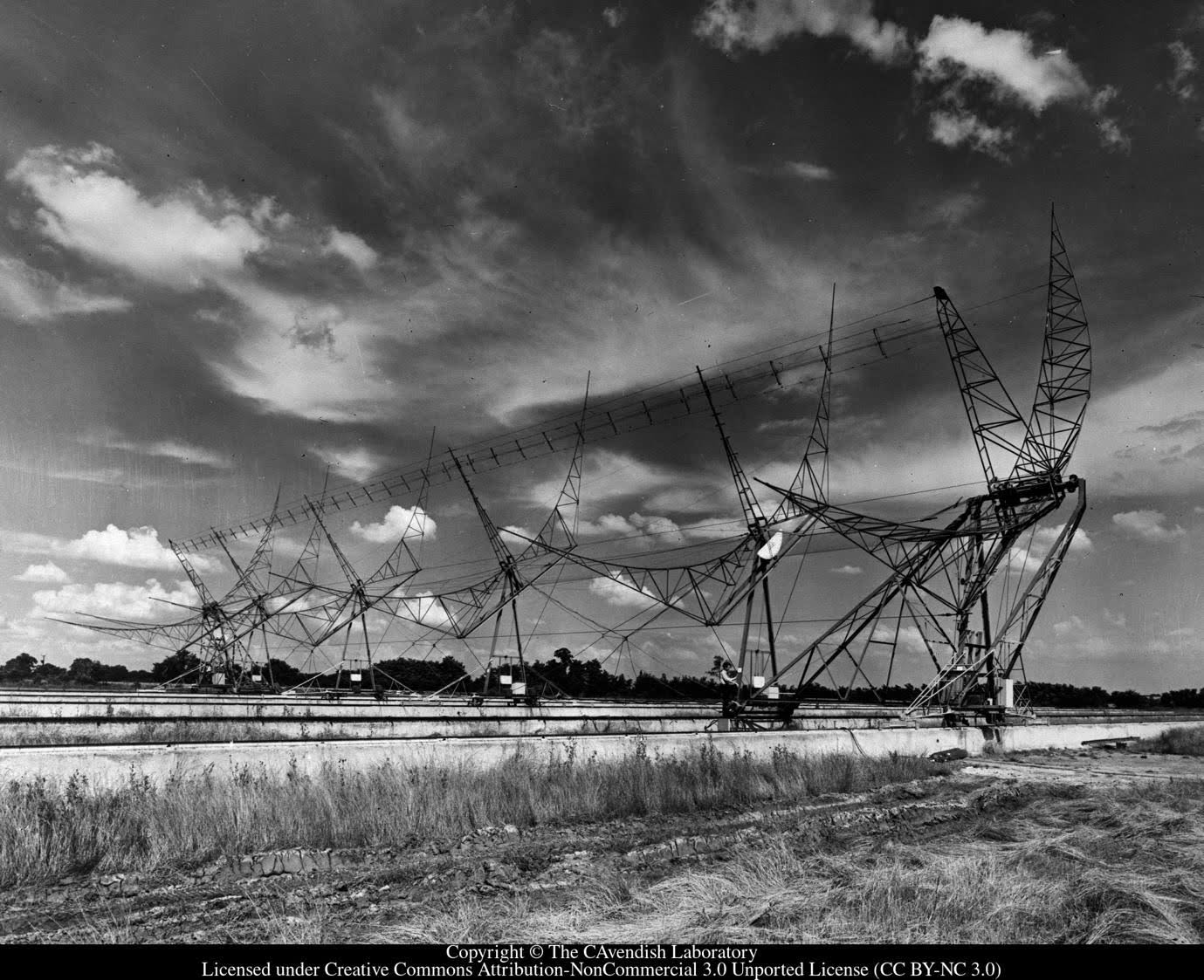
1974
Martin’s contribution of genius was the practical implementation of Earth-rotation aperture synthesis which resulted in high angular resolution and high sensitivity images of the radio sky. The first pioneering survey was carried out using the two-dimensional mapping technique of the region about the North Pole by Martin and Ann Neville, demonstrating the technique’s remarkable power. Construction of the One-Mile Telescope followed, the first fully steerable Earth- rotation aperture synthesis radio telescope. For this invention, Martin was awarded the 1974 Nobel Prize in Physics jointly with Tony Hewish.
At the same time, Tony constructed a 4-acre low-frequency array to study the ‘scintillation’ of radio sources. The object was to study interplanetary scintillation as a means of discovering quasars and characterising the properties of the interplanetary medium. His graduate student Jocelyn Bell joined the project in 1965 and was deeply involved in the construction and commissioning of the array. With great skill and tenacity, she made the remarkable discovery of pulsars, which were soon associated with magnetised, rotating neutron stars.
Image: Jocelyn Bell with the discovery records of the first pulsar CP1919
With the great success of the One-Mile Telescope, the next step was to extend these techniques to higher frequencies with larger numbers of telescopes. The 5-km radio telescope, arguably Martin’s greatest achievement, resulted in higher angular resolution and sensitivity. Over a 25-year period, the sensitivity of radio observations increased by a factor of about one million and the imaging capability from several degrees to a few arcseconds, comparable to that of ground-based optical telescopes.
Image: The 5-km radio telescope
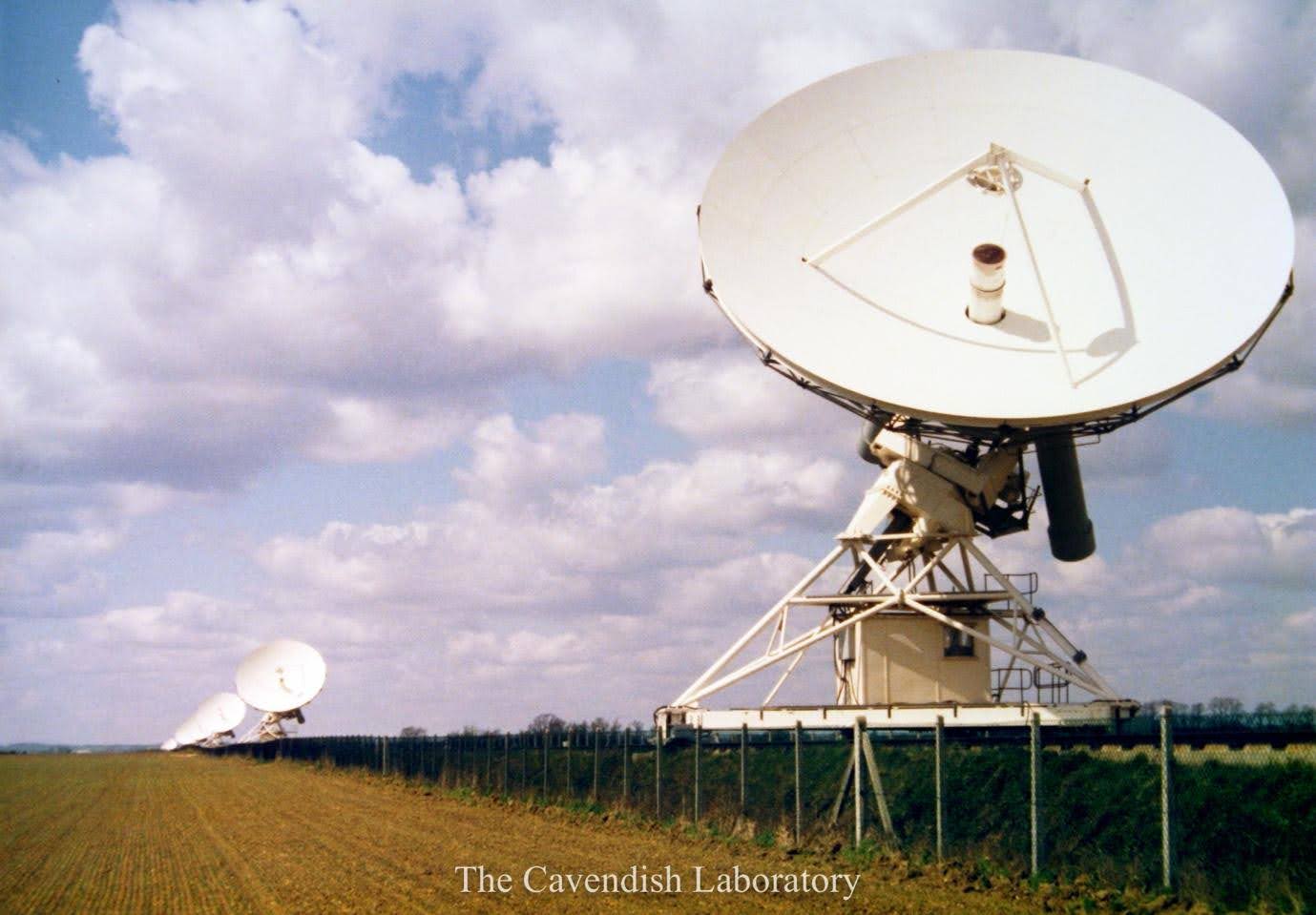
1960s/70s
Martin was personally involved in every aspect of these complex telescope systems. As remarked by Peter Scheuer, the development of aperture synthesis
‘was the story of one remarkable man, who not only provided the inspiration and driving force but actually designed most of the bits and pieces, charmed or savaged official persons according to their deserts, wielded shovels and sledgehammers, mended breakdowns, and kept the rest of us on our toes.’
Below: Martin Ryle in his element.
In the mid-1970s, John Baldwin and Peter Warner published two important papers on phaseless aperture synthesis, demonstrating how images could be reconstructed from the cross-correlation of intensity signals between pairs of telescopes. The technique was experimentally demonstrated in 1978 by Julia Riley and Guy Pooley who used it to produce a high-resolution image of the source 3C123. A second paper generalised the technique to the case in which there was no single dominant source. Further developments included closure phase and self-calibration techniques, which are now the standard data reduction techniques in radio astronomy.
John recognised that the same techniques could be used to implement interferometry at optical and near infrared wavelengths. Optical aperture synthesis is more challenging than at radio wavelengths for two reasons. First, the wavelengths are typically about 100,000 times smaller than those of radio waves and so the path compensation must be accurate to better than a thousandth of a millimetre. Second, the atmosphere is not stable and changes the arrival phases of the waves - this blurring is known as ‘astronomical seeing’.
John led the efforts to build the imaging Cambridge Optical Aperture Synthesis Telescope (COAST). The path corrections are introduced by very precisely moving trolleys in an underground laboratory. The COAST Interferometer had four telescopes, and their signals were taken along pipes to the underground laboratory to be combined. An image of the red giant star Betelgeuse made using COAST showed bright spots due to huge holes in the star’s upper atmosphere. Equally impressive was the image of the binary star Capella, the separation of the stars being only 25 milliarcseconds. The success of the project led to involvement in the construction of a large optical-infrared interferometer at the Magdalena Ridge Observatory in New Mexico, which aims to achieve 100 times higher angular resolution than the Hubble Space Telescope.
The discovery of the cosmic microwave background radiation (CMB) by Penzias and Wilson in 1965 opened up new approaches to cosmology and the origin of structure in the universe. In 1966, John Shakeshaft and Tim Howell made the earliest low frequency measurements of its spectrum, confirming its black body nature. Then, the group led a series of millimetre radio telescope arrays to measure the spatial fluctuations in its distribution over the sky. The Very Small Array located on Tenerife in the Canary Islands at a high dry site, succeeded in measuring the detailed CMB power spectrum on small angular scales.
The success of these experiments led to the construction of the Arcminute Microkelvin Imager (AMI) at Lord’s Bridge, the principal objective of which was to image the very small decrements in the CMB due to the presence of very hot gas in clusters of galaxies. This involved reconfiguring the 5-km telescope as a compact array to complement the observations made by the higher frequency small AMI array.
Image: The AMI Small Array.
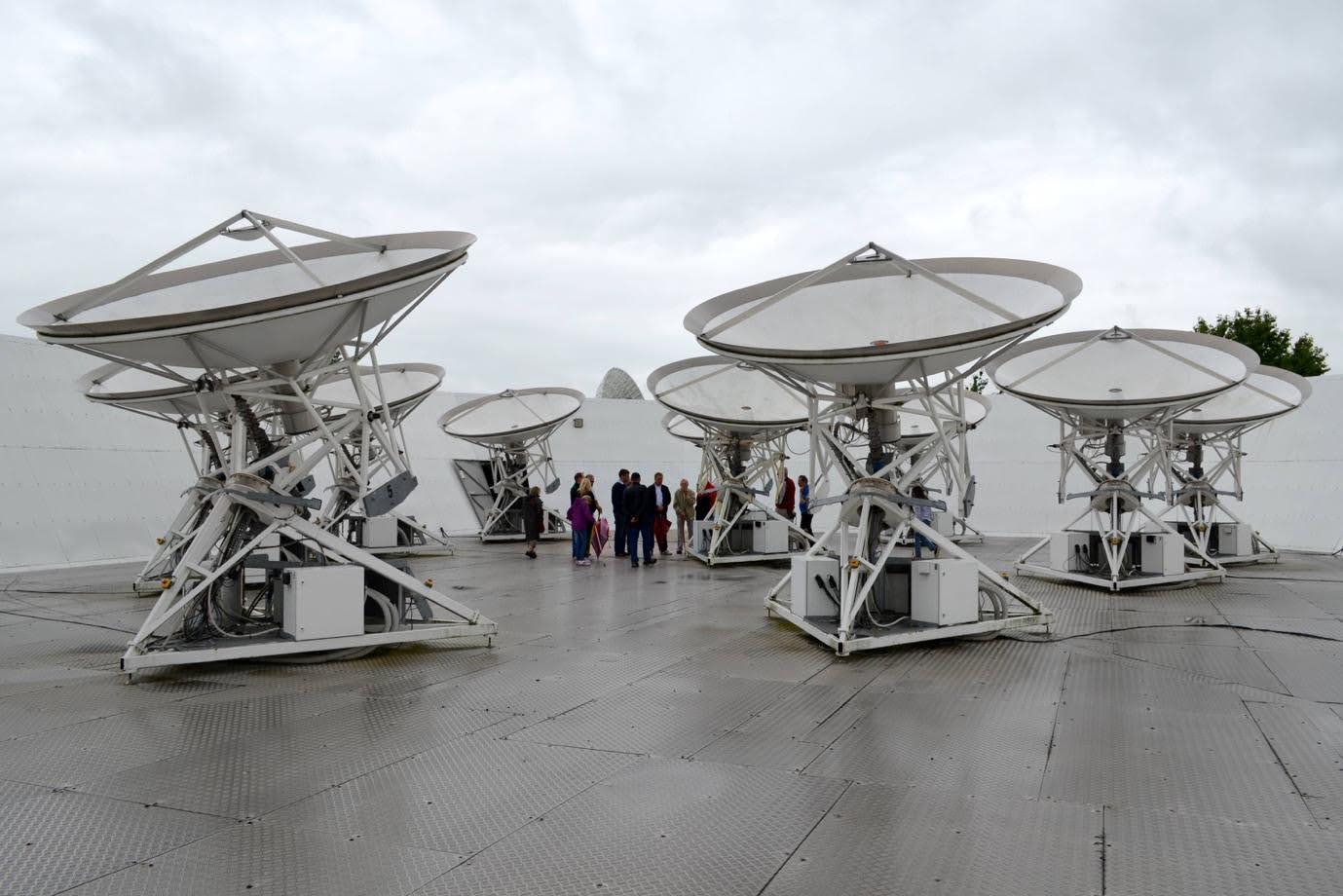
In the early 1970s plans were developed for a national large millimetre-submillimetre telescope. This was a new venture for the MRAO since the team was not experienced in the science of molecular line astronomy. Richard Hills joined the Observatory in the 1980s and became the project scientist for what was named the James Clerk Maxwell Telescope located on Mauna Kea in Hawaii. Richard and the MRAO team were central to the development of the telescope which opened up many new areas in millimetre and submillimetre astronomy.
In turn this led to involvement in the international Atacama Large Millimetre Array (ALMA). There was significant MRAO involvement in this very large project. Richard Hills became the overall project scientist for the project in Chille, while John Richer became project scientist for the UK’s participation in the project. ALMA has done for submillimetre astronomy what the HST has done for optical astronomy.
The group’s next major international radio astronomy project is the Square Kilometre Array, which involves locating huge aperture-synthesis radio telescope arrays in Australia and South Africa, each with collecting areas of about 1 km2, giving a sensitivity gain of a factor of 100.
2010
Since 2010, there has been a shift in the emphasis of the research programme in response to evolving priorities. In 2012, Roberto Maiolino was appointed Professor of Experimental Astrophysics, bringing involvement in many of the most important observational programmes in the origin and evolution of distant galaxies, including the James Webb Space Telescope and the European Extremely Large Telescope. These studies are now a major part of the programme of what is now called the Cavendish Astrophysics Group.
The other major change of direction came with the appointment of Didier Queloz in 2013, now the Jacksonian Professor of Natural Philosophy in the Cavendish. He was the co-discoverer of the first example of an extra-solar planet orbiting a sun-like star with his supervisor Michel Mayor – both were awarded Nobel prizes in 2019 for this discovery. He now leads a large research team and is directing a major international ten- year research programme supported by the Leverhulme Foundation on the search for life in the universe.
Malcolm Longair is the Emeritus Jacksonian Professor of Natural Philosophy, former Head of the Cavendish Laboratory (1997 – 2005), and former Director of Development until his retirement in 2023.
